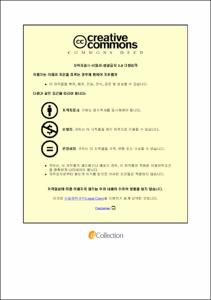Fish classification based on Convolutional Neural
- Alternative Title
- 콘볼루션 신경망에 기초한 물고기 분류
- Abstract
- 자동 어류 이미지 분류 시스템은 어류를 소비하는 과정이나 다른 일을 위해 분류하는 과정에서 매우 중요한 역할을 한다. 어류 이미지를 수동으로 다른 등급으로 분류하는 것은 어렵고 지치고 지루하다. 이 논문은 어류 이미지를 분류할 수 있는 빠르고 정확한 시스템을 제안한다. 시스템은 이미지 전처리, 특징 추출 및 분류 방법으로 구성된다. 제안된 어류 분류 모델을 훈련하고 테스트하기 위해, 심층 신경망의 두 가지 대표적인 유형인 Convolution Neural Network (CNN)과 Long Short Term Memory(LSTM)을 사용했다. 이 중 CNN은 텍스트 분류에서 인기가 높은 LSTM보다 이미지 분류에 대해 더 높은 성능을 보여주었다. 게다가, 훈련의 어려움 때문에, 정규화 기법인 Dropout과 N-best 후보법을 적용하여, 오버피팅을 피하고, 단 하나의 최적해가 아닌 복수의 답안을 반환했다.
Automatic fish images classification system plays a very important role in the process of dividing fishes into categories for human consumption or other tasks. To manually classify fishes into different classes is difficult, tiring and boring. This thesis proposes a fast and accurate system capable of classifying fish images into different categories. The system comprises image processing, feature extraction and classification method. To train and test the proposed fish classification model, we used the convolutional neural network (CNN) and the long short-term memory (LSTM) which are two representative types of deep neural network. Among them, CNN has been, proved more for images classification, than LSTM, which is popular for text classification. Furthermore, due to difficulties in training, regularization technique of dropout and N-best candidates methods were applied to avoid overfitting and return multiple answers instead of a single best
- Issued Date
- 2019
- Awarded Date
- 2019. 8
- Type
- Dissertation
- Publisher
- 부경대학교
- Affiliation
- 부경대학교 대학원
- Department
- 대학원 융합디스플레이공학과
- Advisor
- Bong-Kee Sin
- Table Of Contents
- I. Introduction 1
II. Related work 2
III. Artificial intelligence 3
3.1 .Machine learning 3
3.2. Artificial neural network 5
3.2.1. Training the model 8
3.2.2. Overfitting 9
3.2.3. Dropout 10
3.2.4. Batch Normalization 11
3.2.5. Activation Functions 12
3.2.6. Optimizer 13
3.2.7. Softmax 13
IV. Deep learning 14
4.1. Convolutional neural network 15
4.1.1. Input layer 16
4.1.2. Convolutional Layer 17
4.1.3. Pooling layer 18
4.1.4. Flattening Layer 18
4.1.5. Fully connected layer 19
4.1.6. Output layer 20
4.2. Recurrent neural networks (RNN) 20
4.3. Long Short-Term Memory (LSTM) 21
4 4. Dropout 21
4.5. Top k candidates 22
V. Experiments and results 23
5.1. QUT Fish Dataset 23
5.2. Results 23
VI. Conclusion 26
Reference 27
Acknowledgment 30
- Degree
- Master
- Appears in Collections:
- 대학원 > 융합디스플레이공학과
- Files in This Item:
-
-
Download
 Fish classification based on Convolutional Neural.pdf
기타 데이터 / 1.98 MB / Adobe PDF
Fish classification based on Convolutional Neural.pdf
기타 데이터 / 1.98 MB / Adobe PDF
-
Items in Repository are protected by copyright, with all rights reserved, unless otherwise indicated.